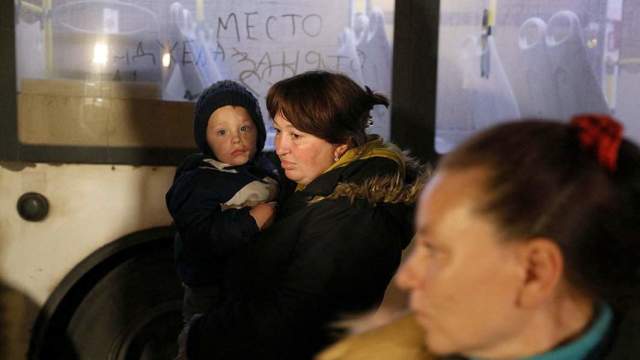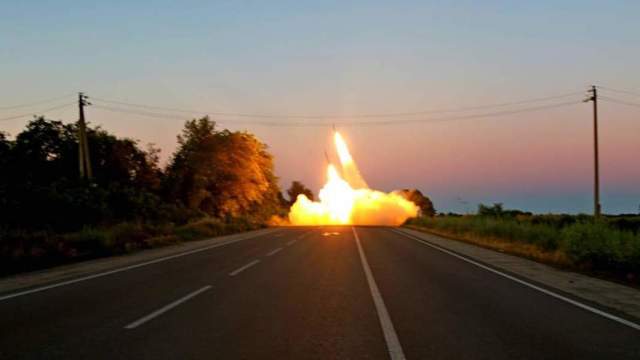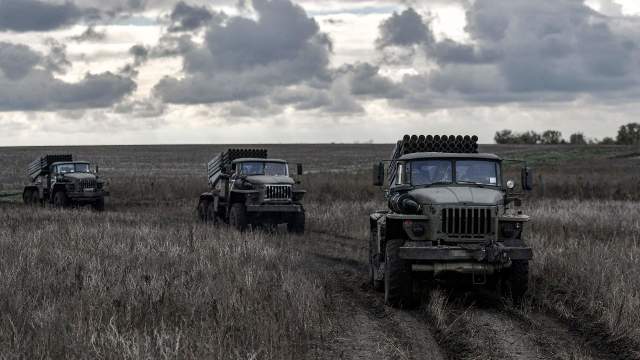More than 30 thousand servicemen and about 5 thousand pieces of equipment were successfully transferred across the DnieperRussian troops in the Kherson direction completed the transfer to the left bank of the Dnieper at 5.00 Moscow time on November 11.
The Defense Ministry announced the withdrawal of more than 30 thousand military personnel and about 5 thousand units of weapons and equipment. The ministry assured that not a single combat vehicle was left on the right bank. The withdrawn units have already occupied defensive lines along the Dnieper. Experts note the competent planning and organization of the maneuver and compare it with the evacuation of Odessa in 1941.
To the left bank
The military department on Friday reported on the completion of the transfer of the Russian group across the Dnieper in the Kherson direction.
— All personnel, weapons and military equipment of the group have been withdrawn to the left bank. In total, more than 30 thousand Russian servicemen, about 5 thousand units of weapons and military equipment, as well as material property were withdrawn. All Russian military equipment that was subject to repair was also taken to the left bank of the Dnieper. Currently, repair units have started servicing it," said the official representative of the Ministry of Defense, Lieutenant General Igor Konashenkov.

Photo: REUTERS/Alexey Pavlishak
Image source: iz.ru
He stressed that not a single unit of military equipment and weapons was left on the right bank. All Russian servicemen have been transferred to the left bank of the Dnieper. Formations and military units occupied pre-prepared defensive lines and positions.
— Despite the enemy's attempts to disrupt the transfer of Russian troops, no losses among personnel, weapons, military equipment and materiel were allowed, — the general assured.
At night, Ukrainian formations tried to disrupt the transportation of civilians and the transfer of troops across the Dnieper: five strikes were made by rockets of the American HIMARS MLRS on the crossings over the Dnieper. 28 shells were shot down by air defense systems, five more were deflected from targets by electronic warfare, the Defense Ministry said.

Photo: Global Look Press/Cover Images
Image source: iz.ru
The maneuvers of the troops were covered by artillery and aviation, which struck Ukrainian formations.
— Such a large—scale withdrawal of troops is an extremely difficult operation: it was necessary to plan the order of departure, leave a cover group so that it also left, — military historian Dmitry Boltenkov told Izvestia. — Probably, faulty equipment was taken out first. It should be noted the work of the military police, with such large-scale maneuvers, video frames practically did not get into the Network. We can recall the experience of the evacuation of Odessa in 1941, when troops were withdrawn, and then the remaining cover groups left overnight. It's the same here, only in a shorter time. This is a competently, cleverly conducted operation, with the removal of the rear, hospitals, material supplies, so that the enemy does not get anything of value.
On November 9, the commander of the joint grouping of Russian troops, Sergei Surovikin, reported to Defense Minister Sergei Shoigu about problems with the supply of troops on the right bank of the Dnieper due to constant shelling of all crossings. Against the background of the threat to the residents of the city and the danger of isolation of the Russian group in Kherson, it was decided to organize a defense on the left bank of the Dnieper. "For us, the life and health of Russian servicemen are always a priority. We must also take into account the threat to the civilian population. Make sure that everyone from among the civilian population was able to leave. Proceed with the withdrawal of troops and take all measures to ensure the safe transfer of personnel, weapons and equipment across the Dnieper River," the head of the Defense Ministry ordered. Surovikin promised that the maneuver would be carried out as soon as possible.
On the defensive lines
On Friday, Russian units continued to repel attacks by Ukrainian formations in other directions.
— In the Kupyansk direction, three company tactical groups of the Armed Forces of Ukraine made unsuccessful attempts to launch an offensive from the areas of the settlements of Yagodnoye, Kislovka and Vladimirovka in the Kharkiv region. As a result of the fire damage, the enemy was stopped and thrown back to their original positions," Igor Konashenkov said.
At the same time, the Ukrainian forces lost 120 servicemen, two tanks, three infantry fighting vehicles, two armored personnel carriers and five vehicles, the ministry said.
In the Krasnolimansk direction, Russian troops thwarted an attack attempt by two motorized infantry companies reinforced by Polish mercenaries. The losses of the VFU amounted to up to 90 servicemen and mercenaries killed and wounded and an armored vehicle.
Photo: RIA Novosti/Konstantin Mikhalchevsky
Image source: iz.ru
In the South Donetsk direction, Russian units repelled the counterattacks of motorized infantry companies of the VFU, the losses of Ukrainian formations amounted to more than 65 servicemen, a tank and four armored vehicles.
Operational-tactical and army aviation, missile troops and artillery hit nine control points of the VFU, the ammunition depot of the 28th mechanized brigade, 52 artillery units in firing positions and 176 areas of concentration of troops during the day. During the counter-battery struggle, a platoon of American towed M777 howitzers and a platoon of Ukrainian self-propelled Acacia howitzers were suppressed, the Defense Ministry reported.
Fighter aircraft of the Russian Aerospace Forces shot down a Mi-8 helicopter of the Ukrainian Air Force near the village of Mirovka, Zaporozhye region. During the day, air defense systems shot down seven UAVs, 32 shells of the American HIMARS multiple rocket launcher system in the areas of the settlements of Novaya Kakhovka, Korsunka and Antonovka of the Kherson region, as well as five American HARM anti-radar missiles in the areas of the settlements of Irmino in the LPR, Yenakiyevo in the DPR, Korsunka and Novaya Kakhovka of the Kherson region, the department said.
In total, since the beginning of the special military operation, 333 aircraft, 174 helicopters, 2486 unmanned aerial vehicles, 388 anti-aircraft missile systems, 6511 tanks and other armored combat vehicles, 885 multiple rocket launchers, 3569 field artillery and mortars, as well as 7166 units of special military vehicles have been destroyed, General Konashenkov listed.
In heavy fighting
The Russian Defense Ministry told about the servicemen who showed courage and dedication during the fighting.
Major Ruslan Sabirov provided communications for Russian units. As a result of the shelling, a part of the communication equipment of the battalion's control point failed. The commander was seriously injured, and Ruslan took command of the unit. He organized the restoration of communications in the shortest possible time, thanks to which the attack of the Ukrainian formations was repulsed without losses.
The squad of Sergeant Roman Poliukhty as part of the battalion tactical group knocked the VFU out of their positions. Noticing a group of Ukrainian saboteurs, Roman reported this to the senior of the column. It was decided to accept the fight. Roman, together with his subordinates, acting at the forefront of the attack, inflicted significant damage to the militants. Thanks to him, the task was completed without losses, the military department said.

Photo: RIA Novosti/Viktor Antonyuk
Image source: iz.ru
The company of Major Andrey Zhuravlev defended the liberated settlement. For four hours, the unit held back the VFU offensive. The officer's subordinates destroyed five infantry fighting vehicles and many militants. As a result, the Ukrainian formations retreated with losses, one militant surrendered, the enemy suffered significant losses and retreated.
Andrey Fedorov
Roman Kretsul


